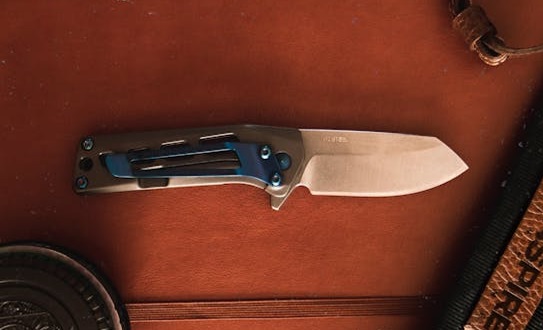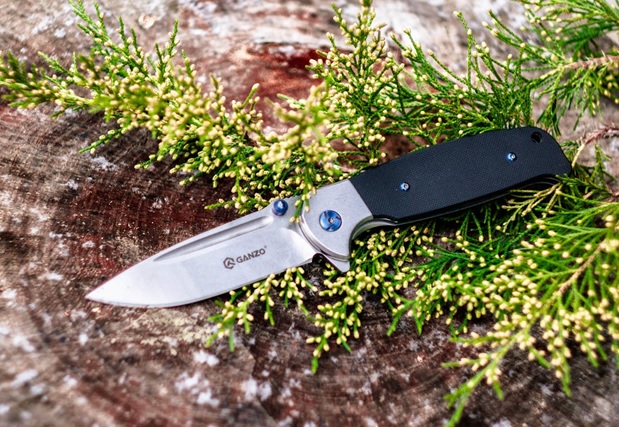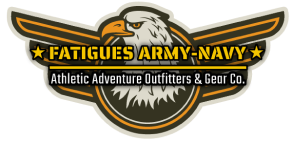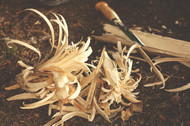Bug Out Bag Essentials: What Knife to Pack?
Posted by: Fatigues Army Navy Outdoor Gea on 12th Aug 2024
You’ve heard of a bug out bag? It’s basically a pack that contains everything you could need in a SHTF situation. Many of the commonly cited bug out bag essentials are tools, food, medical equipment and other prepper supplies, and some lists are more comprehensive than others.
For our purposes, we’re going to focus specifically on knives, why your bug out bag needs one, and what types of knives there are. So pack up the camo shirt and first aid kit - but don’t forget to bring along a good blade.
Types of Knives and What They’re Good for
There are all different types of knives out there, some of which are much more practical for EDC and bug out bag essentials lists than others.
There’s some gray area between “style” of knife, knife profile, and other features, but we’re going to summarize this as succinctly as possible.
- Wharncliffe and sheepsfoot style blades: A wharncliffe style blade, or a “wharnie” has a spine that slopes forward to meet the point. The edge is usually straight. Sometimes they are also called sheepsfoot blades; usually the point of a sheepsfoot is not as sharp as a wharnie. These are excellent for general utility as the tip is very strong and generally unlikely to break. (The knife below might be categorized as a sheepsfoot.)

- Cleavers: Cleavers are generally categorized by a large, heavy blade with no point. This makes them excellent for chopping and prying but not great for piercing. Still, for camp craft and food prep, they can be very practical.
- Machetes/Bolos: A whole article could be written just about different styles of machetes, but generally, a machete is a large knife which is used for trail blazing and light clearing. They’re usually too large to be used for fine detail work, though.
- Drop point knives: Probably the most practical all-around profile, a knife with a drop point has a spine that drops gently to meet the point; in most cases, the belly is swept (otherwise it would be a sheepsfoot or a wharncliffe). Drop point blades are excellent for general utility, camp chores, food prep, game and fish cleaning, and much more. (A drop point is pictured below.)

- Straight-back knives: Straight back knives are popular because this is the profile used by Mora. It is just what it sounds like - a knife with a gently curved belly and a straight back that meets it at the tip. Like drop point blades they are excellent for general utility.
- Clip point knives: A clip point blade has a spine with a swedge or a “clip” taken out of it, producing a very fine point. They look cool, and are good for detail work, but are prone to tip breakage.
- Spear point knives: In a spear point profile, the belly and spine slope towards each other. The profile is bilaterally symmetrical, making it effectively impossible to tell which side is the edge but for looking at the handle. Spear point blades are also highly utilitarian and make an excellent choice for bug out bags. (The image below is of a spear point.)

- Hawkbill style blades: In a hawkbill style blade, also known as a talon or a karambit, the edge is curved inward. They are useful for drawcuts, which makes them practical for harvesting and pruning, but not much else. Also, it’s difficult to sharpen the blade. Like clip points, they look cool but are not well-suited to SHTF scenarios. Stick with a generalist like a drop point, straight back, or spear point.
- Skinners/Trailing point: These knives have wide, swept bellies and are useful for long, sweeping cuts. This makes them excellent for skinning (hence the name) and breaking down game. Slightly more specialized than some of the other profiles mentioned here but excellent nonetheless.
- Leaf blades: In a leaf blade, the width of the blade profile generally increases away from the hilt, then tapers towards the point. This makes these profiles useful for chopping and slicing. Many Spyderco knives feature a leaf blade. They are somewhat specialized but also practical for survival and general preparedness.
- Filet knives: A filet knife generally has a long, thin, flexible blade with a slightly swept edge and a fine point. They are highly specialized and useful only for fileting and preparing cuts of meat. As a general rule, they are too specialized for SHTF situations, but can be a good secondary or tertiary choice.
- Neck knives: Any knife can be a neck knife if you wear it around your neck, but as a general rule they are very small. They can be good as an EDC option for general utility, provided you get one with a generalist blade profile.
- Needle point knives/daggers: Needle pointed blades, like stilettos, are generally very narrow and designed for piercing and penetration. Some are sharpened on both edges. Unsurprisingly, the points are too fragile to be practically used for EDC. Save the precious space in your bug out bag for something more generalized.
Fixed or Folding?
There are some great folders out there, and for EDC and general utility, a folder is a great bet, since they’re discreet and you don’t need a sheath. Nonetheless, as some knife users say, folders are “pre-broken.” For serious work, you can’t beat a fixed blade.
But as you may know, two is one and one is none, so really, rather than replacing your folder with a fixed blade, pack one (or more) of each in your bug out bag. Then, you can use each for different jobs.
What Type Is Best If We’re Talking Bug Out Bag Essentials?
The more specialized profiles are generally not the best for a bug out bag checklist, either because of limited utility or impractical design. Similarly, a knife that is highly specialized, like a filet knife, though it is extremely useful for its intended application, would not be a good choice for a bug out bag if you could only have one knife.
To illustrate the point, a filet knife will do a better job at processing harvested game than a folder with a drop point, but a drop point would do better at carving a spoon, splitting a small log, preparing food - and other tasks.
Among the most effective of general purpose profiles are drop points, spear points, skinners, leaf blades, and straight back knives. If you must carry only one, carry one of these, and make it a fixed blade.
Why You Should Have More Than One Bladed Tool
With that being said, we need to remind you again that two is one and one is none. No bug out bag checklist should admonish you to carry only one bladed tool and so we won’t.
Don’t just pack one. Pack two or three different knives that excel at different jobs. For instance, carry a small fixed blade, a larger fixed blade, and perhaps a small folder with a swept blade. Vary up the blade profiles if possible, that way you’ll have different jobs for different tasks.
Moreover, beyond a knife, you should carry a machete or a large camp knife in your bug out bag, along with a shovel, a hatchet, and a saw, at minimum. There are other bladed tools that are useful but this is a list of the absolute bug out bag essentials.
Creating a Bug Out Bag Checklist
In addition to bladed tools, there’s so much else you should also carry for general preparedness. If you’re wondering what to stock, check out this supplementary bug out bag checklist:
- Important documents and ID
- Maps/orienteering essentials like a compass
- Cash
- Batteries
- Flashlights (more than one)
- Portable power banks
- First aid essentials
- Food (MREs) and water
- Medicine
- Multitools
- Duct tape
- Candles
- Carabiners
- Paracord
- Small sewing kit
- Toiletries
- Sunscreen and insect repellent
- Fire starting essentials (matches, lighters, etc.)
- Spare clothes and socks (drop the camo shirt here)
- A small tarp if you can spare the room
This is just a quick bug out bag checklist and in no way is intended to supplant any larger, much more thorough guide. It is just a place to start so you can get thinking about what to bring and be properly prepared - beyond the camo shirt and shorts.
Still, it is a good jumping off point and contains good information. For more information on essential prepper supplies, please see our prepper supply checklists: parts one and two.

